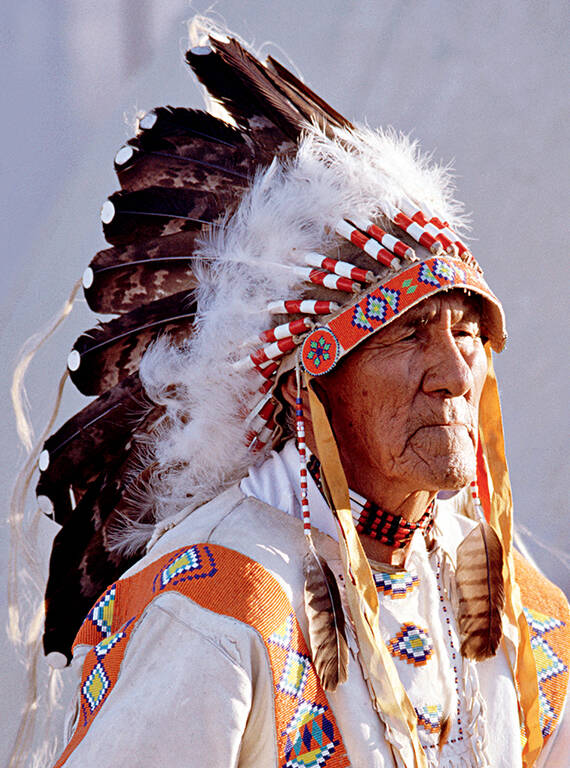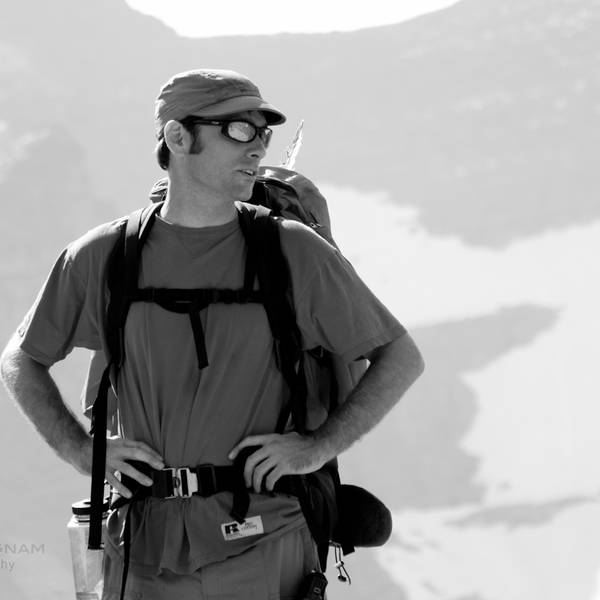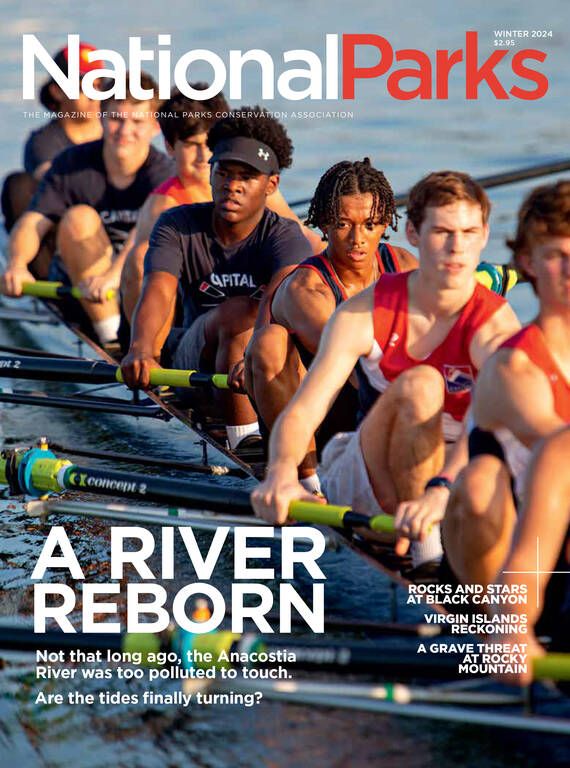Winter 2024
A Land Liberated
For four decades, people who care about a wild corner of Montana called the Badger-Two Medicine fought to keep the land free of oil and gas leases. This autumn, the final holding fell.
The good news arrived just as our Montana summer was folding itself into fall, just as the aspen flickered to gold and the dogwood began painting riverbanks with brushes of burgundy. It landed in my inbox with not just one, but two exclamation marks. The message was concise but very clear: The last of the federal oil and gas leases had been retired in the Badger-Two Medicine area, up along Glacier National Park’s southeastern border.
That sentence looks almost trivial here on the page; it’s so short it might easily be mistaken for a footnote. But for those of us who had waded hip-deep through the struggle for so very long, it was more sea change than seasonal change. Whiskers had grayed while we had worked and waited for this news — this justice. Old friends had passed. Four full decades of life had unspooled, and so it seems worth taking a moment to tell the tale, or at least my version of it.
Up in northwest Montana, where prairie grassland crashes headlong into Rocky Mountain heights, there’s a remarkable 130,000-acre sprawl of wildland tucked tight between Glacier Park, the Bob Marshall Wilderness and the Blackfeet Indian Reservation. Named for the two rivers that stream from its summits — Badger Creek and the Two Medicine River — the Badger-Two Medicine is a wonder of wild rolling foothills and pothole lakes ringed by dark pine forests and shadowed by alpine peaks. It’s the finest habitat I’ve known, with mountain lions, bears, wolves and wolverines tracking seasonally, following prey since time immemorial from lowland winter range to the cool of high summer meadows.
The adjacent wilderness and park boundaries safeguard mostly high-altitude rock and ice; the Badger-Two Medicine embraces the rich habitat in between, the soft green that always has connected the stretches of hard mountain scenery we’ve protected. It’s also a landscape held sacred by the Blackfeet Nation — a source of Blackfeet origin stories and a crucible for Blackfeet culture. Managed by the U.S. Forest Service, the Badger-Two Medicine is part of a larger region known by the Blackfeet as Mo’kakiikin Miistakiiks, the Backbone of the World. Mountain summits here carry names grown straight from the roots of Blackfeet cosmology: Morning Star, Poia, Little Plume and Scarface. This is not history. This is today’s cultural practice, still very much alive.
I guess what I’m saying is that for me, the Badger-Two Medicine is the last refuge of much that matters most in this world. It is also where my heart lives, where my head goes when it needs a rest, where I hunt elk and gather summer berries.
In the early 1980s, the Reagan administration determined that the highest and best use of this wild cultural treasure would be to lease it to oilmen for $1 an acre.
Many people, Tribal and non-Tribal together, fought for decades to keep those leases undeveloped. We also fought to pass federal legislation prohibiting any new leases, to negotiate the voluntary retirement of as many leases as possible, to ban all motorized vehicles, to ban all commercial timber harvest and, eventually, to make the entire Badger-Two Medicine a Traditional Cultural District, a designation that requires federal agencies to consult with Tribes about potential development.
That’s a whole lot of fighting for folks who never wanted this battle. “The Blackfeet Nation did not create this controversy,” the Tribe wrote in a recent statement. “We had no hand in the dealings between the American government and private industry that established these leases in the first place. Our Tribal leadership was not consulted, and our community welfare was not considered. And yet it fell to us to defend our sovereign treaty rights, our traditional lands and waters, and our cultural survival. This has long been the case, as governments and private interests have repeatedly sought to profit at the expense of our traditional territories and cultural practices.”
The most recent installment of the battle was sparked in 2013 when a Louisiana oilman, head of Solenex, filed suit demanding access to his Badger-Two Medicine leasehold. His argument was, perhaps, not entirely unreasonable — it had been more than 30 years since he’d bought his lease, after all, and he’d never been able to develop it. Thirty years, he said, was too long a delay.
The Blackfeet Nation did not create this controversy. … And yet it fell to us to defend our sovereign treaty rights, our traditional lands and waters, and our cultural survival.
But how long should a company have to wait before industrializing this last refuge? Twenty years? Thirty? Forty? What’s the “right” amount of time to pause and consider before cutting off these ancient flows of wildlife migration? Before stamping out Blackfeet cultural practices that reach back, uninterrupted, through so many millennia? Honestly, 30 years didn’t really feel that long.
This story, as I lived it, goes back 36 years, to when I was a fresh-faced sophomore at the University of Montana. I had enrolled in a program called “wilderness and civilization,” which combined economics, forestry, literature, art, biology, public policy and a whole lot more into an integrated curriculum exploring that complicated intersection where human nature meets wild nature. We spent the first two weeks of the program backpacking across the Bob Marshall Wilderness Complex, straight through the Badger-Two Medicine.
It was 1987, and the ink on those Reagan-era leases was still fresh, as were the wounds the leases had inflicted. Guest lecturers met us occasionally along the trail, including Blackfeet elders who were (yet again) fighting both the government and industry.

Many Blackfeet elders, including the late George Kicking Woman (pictured), spent decades tirelessly advocating for the protection of the Badger Two-Medicine
landscape.
Buster Yellow Kidney. George Kicking Woman. Earl Old Person. Curly Bear Wagner. I learned the stories of their struggles when I was a student, reported on those stories during a career as a journalist, and helped write new chapters after hiring on at NPCA in 2010. And so it surprised no one when NPCA and I formally joined the lawsuit in 2013 to defend the Badger-Two Medicine from Solenex (with legal representation by Earthjustice). Concurrent with that, we worked in partnership with a tight team of conservation friends to convince the White House and Interior Department to cancel all remaining leases, including the Solenex lease. We figured if Solenex — or any other company — didn’t have a lease, then there would no longer be a case for the court to decide.
Over countless trips to Washington, D.C., we pushed this new idea up the political rungs. At that time, the government had never canceled federal leases over the objection of leaseholders.
My friend Harry Barnes, then chairman of the Blackfeet Tribal council, started calling Washington “The Promised Land,” because every time we’d go back there, we’d “come home with another armload of promises.” But in 2016 and 2017, the Obama administration and Interior Secretary Sally Jewell shocked Harry and rattled the oil and gas industry by wiping every remaining Badger-Two Medicine lease off the map.
We, not surprisingly, threw a party. Solenex, not surprisingly, filed a lawsuit, revising its existing litigation to challenge Interior’s right to rescind leases — and the wrangling in the courts began. It continued until that early fall day when we reached a settlement with Solenex to retire the last lease, once and for all. Once. And. For. All.
For me, this isn’t only a story about NPCA protecting a park — this is my life. Thirty-six years ago, I started learning a new way of knowing my place in a place from those elders — an education that continues today with Blackfeet friends and mentors such as John Murray and Tyson Running Wolf, for whom the land is so much more than land. This is my family. My “nomohpapiiyihpiksi.”
Over these decades, we’ve brought back wild buffalo, built a community food bank, created new Tribal college curricula, delivered health care, repatriated sacred objects, and restored Blackfoot language, Blackfeet culture and wild nature. We’ve laughed a lot, and we’ve taken care of each other when care was needed.

DOI Protects Glacier’s Wild Borderland from Energy Development
Thanks to negotiations between energy companies and the federal government, a remote region known as the Badger-Two Medicine will remain off-limits to oil and gas development.
See more ›In some ways, then, I’m deeply grateful for these leases and for that Louisiana oilman. They changed me and my world profoundly. It wasn’t just the land, but also the fight for the land that shaped all of us — much the way the wolf’s tooth shaped the antelope’s speed. I suspect that’s the case for many of my NPCA colleagues, who are busy working on their own Badger-Two Medicines elsewhere across America.
A few weeks ago, in the clear of a bluebird September day, a group of us gathered under Glacier National Park’s soaring peaks, put a match to that last lease, and danced and sang while it burned. We’ll gather again before the snows whiten the willows to celebrate — and to plan for what comes next.
Not everyone will be there. Buster and George and Earl and Curly Bear and so many others didn’t live to see a world where, for the first time in 40 years, there are no leases in the Badger-Two Medicine. Their absence is an important reminder, though, that ours is generational work. The baton gets passed. The things we start — the big things that are truly worth doing — aren’t always finished in our lifetimes. And that means this isn’t so much a job as a way of being, a constant and patient and personal commitment to people and to place.
We’re in the forever business, and sometimes forever takes a while.
This Badger-Two Medicine story is proof that our work, at its very best, is a leap of faith and an expression of hope. It is a belief that things can be different. Should be different. Will be different. It’s an absolute trust that a new path will open, every time, when old roads are blocked.

National Parks
You can read this and other stories about history, nature, culture, art, conservation, travel, science and more in National Parks magazine. Your tax-deductible membership donation of $25 or more entitles…
See more ›Hope seems in short supply these days, what with the world on fire and all. And in our line of work, we surely lose more than we win. But if the goals are big enough, and the timelines long enough, then those losses, perhaps, turn out simply to be detours along the trail, taking us to important places we might not have walked through otherwise. We can take them in stride, then, and find a new route, so long as we stick together and find the joy in the living of it.
Sometimes, the work just chooses us. And that’s when life gets genuinely interesting. So my hope for all of us who care deeply about defending a place is that the work we start today wakes both our heads and our hearts and is as interesting as it gets. And whatever that work may be — for you, for us together — I hope it doesn’t take 40 years. But if it does, well, that’s not necessarily a bad thing, eh? Because the seasons will continue to turn like so many aspen leaves, and new hands will be there to pick up where we’ve left off.
Onward.
About the author
-
 Michael Jamison Crown of the Continent Campaign Director, Northern Rockies
Michael Jamison Crown of the Continent Campaign Director, Northern RockiesMichael joined NPCA’s Glacier Field Office in September 2010. As campaign director for NPCA’s Crown of the Continent initiative, Michael continues to expand his efforts to promote the narrative of the Crown and of the people who call it home.



